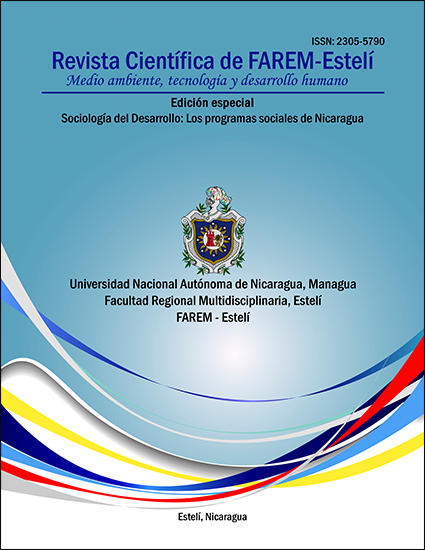Caracterización del Programa Productivo Alimentario “Hambre Cero”. (PPA) en el marco del Plan Nacional de Desarrollo Humano (PNDH) de Estelí, Nicaragua
Resumen
El presente estudio caracteriza el Programa Productivo Alimentario mejor conocido como “Hambre Cero” en la ciudad de Estelí, Nicaragua. El estudio lo realizamos por medio de entrevistas a los coordinadores del Programa a nivel departamental y a sus beneficiarios, también, a través de bibliografías citadas. Este programa surge como la implementación de una política de seguridad alimentaria y nutricional que es justificada en Nicaragua, donde entre 2003 y 2005 un 22% de la población estaba todavía sub-nutrida, según las cifras de la FAO. Para tal fin el Gobierno de Reconciliación y Unidad Nacional (GRUN) creo el Programa Productivo Alimentario. El objetivo del PPA en sus inicios fue erradicar el hambre, la desnutrición crónica, la pobreza extrema y el desempleo en 75,000 familias rurales pobres, mediante el incremento cuantitativo de la producción y el consumo de alimentos proteicos. Este es uno de los programas más emblemáticos y propagandizados por el actual gobierno como su respuesta principal a las necesidades de las familias campesinas especialmente de las mujeres. Se le presenta como un programa de empoderamiento de las mujeres, ya que la asignación de recursos está dirigida a la mujer de la familia. El programa busca contribuir a reducir la desnutrición y a capitalizar a las familias mediante la comercialización de los productos. En el diseño, es un programa de transferencia en forma de bienes y animales que posteriormente deben reintegrar hasta en un 20%, que será para su propio beneficio, ya que les permite a las mujeres organizarse en cooperativas o emprender su propio negocio. Dentro de los principales resultados están: el 70% de protagonistas producen y venden sus excedentes, están organizados en 1,681 núcleos solidarios con ellos se han creado 295 cooperativas en las que están integradas 8,111 familias y han generado un fondo revolvente de casi cien millones de córdobas.
Palabras Claves: Hambre Cero; Pobreza; Alimentación; Mujeres; Desarrollo; Nicaragua



